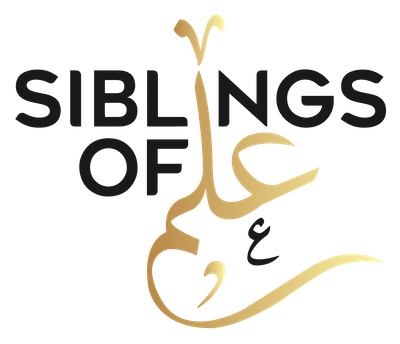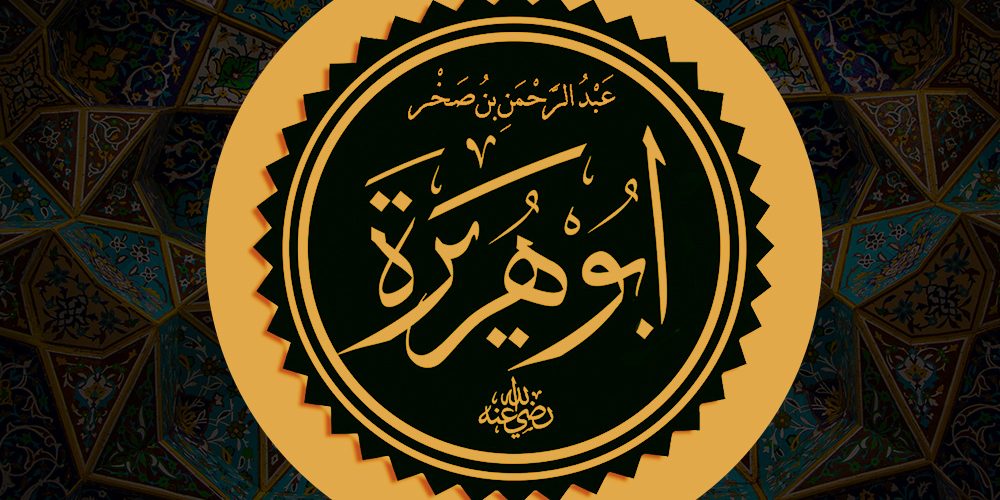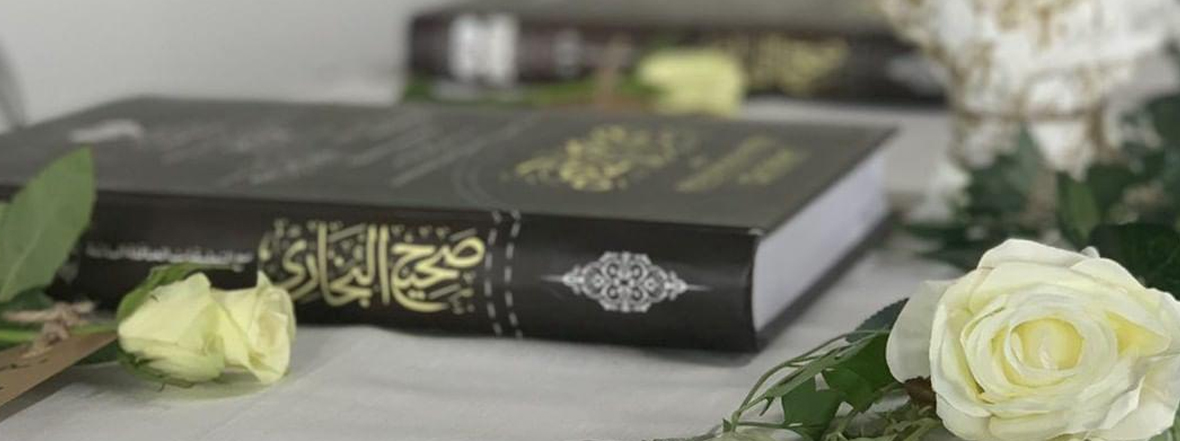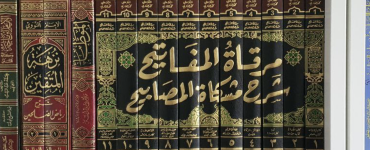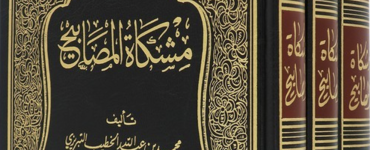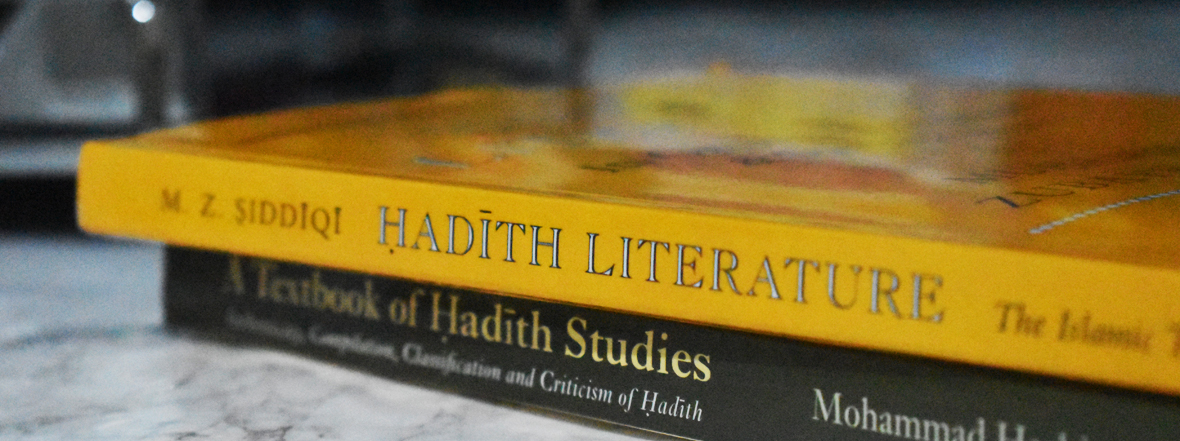Ḥadīth
The word ḥadīth lexically refers to a narrative or something new. Conventionally, it refers to a prophetic tradition – being an account of what the Prophet ﷺ said (qawl) or did (fiʿl), or of his tacit approval (taqrīr) of something said or done in his presence.[1] The ḥadīth genre is thus the source of the concept of Sunnah – the normative customs of the Prophet ﷺ and early community that was later counted as a primary source of Islamic law, next to the Qur’ān.[2]
Early Transmission of Traditions
The earliest transmission of ḥadīth was undertaken by those who enjoyed the direct company of the Prophet Muhammad ﷺ, his Companions (Ṣaḥābah) – Allah be pleased with them. They directly heard the Prophet’s words, and verbally conveyed what they had heard to others. This verbal transmission was considered the primary mode of transmission, possibly due to the existence of some prophetic reports that forbade the writing of traditions.[3] However, due to the existence of other prophetic reports that allowed the writing of traditions,[4] some Companions also wrote some of the Prophet’s words, which is evidenced by the mention of scripts (ṣaḥīfah/ṣuḥuf)[5] of Companions such as Jābir ibn ʿAbdillāh (d. 78/697), ʿAbdullāh ibn ʿAmr (d. 65/684), and Abū Hurayrah (d. 58/678) (Allah be pleased with him).[6] Later, scholars from the early second century also compiled traditions, such as Ibn Shihāb al-Zuhrī (d. 124/742) by order of the Caliph ʿUmar ibn ʿAbd al-ʿAzīz (d. 101/720), Ibn Jurayj al-Makkī (d. 150/767), Ibn Isḥāq (d. 150/767), Saʿīd ibn Abī ʿArūbah (d. 156/773), Maʿmar ibn Rāshid al-Yamānī (d. 153/770), and Rabīʿ ibn Ṣabīh (d. 160/777) – Allah be pleased with them.
The predominant practice of direct person-to-person verbal transmission of traditions continued for a number of years with preserved chains of transmission, until a time came when the Islamic empire had vastly expanded, and new problems were arising due to Muslims coming into contact with people from foreign lands. The nature of these problems was manyfold; issues pertaining to business, cultivation, tax, land revenue, rites, and customs of subjects living in newly Islamised lands. These issues had to be dealt with appropriately, in a way that fostered and strengthened the norms of social, communal, and political conduct of the Muslim nation. If this relevant formulation of Islamic law did not take place urgently, the Muslims would have been forced to adopt Byzantine and other foreign laws, codes, and regulations. In order for this formulation to take place, one of the immediate issues requiring attention was the systematic compilation of all the prophetic traditions that were widespread in the verbal and scattered written scripts throughout the Islamic realm. There was a need to subject all these traditions to more minute scrutiny, and to classify them in accordance with carefully devised principles of criticism and compilation. In his introduction to Ibn Ḥajar al-ʿAsqalānī’s (d. 852/1449) Al-Iṣābah fī Tamyīz al-Ṣahābah (Hitting the Mark in Distinguishing the Companions), Dr Aloys Sprenger pays tribute to the meticulousness of the ḥadīth genre in terms of its survey of narrators:
The glory of the literature of the Mohammadans is its literary biography. There is no nation, nor has there been any which like them has during twelve centuries recorded the life of every man of letters. If the biographical records of the Musalmans were collected, we should probably have accounts of the lives of half a million distinguished persons, and it would be found that there is not a decennium of their history, nor a place of importance that has not its representatives.[7]
The ḥadīth scholars of the late second and third generation eventually compiled the various traditions in unique ways in their works. For example, there was the Sunan – works compiled according to the chapters of jurisprudence, the Jāmiʿ – compiled according to eight[8] primary topics, and the Musnad – compiled according to the names of the narrating Companions, either alphabetically, according to who preceded who in accepting Islam, or according to ranks of virtue (faḍīlah). Having these canonised collections thus facilitated the advancement of further studies in the field of ḥadīth, with one particular survey conducted by Muslim authors being the classifying of ḥadīth narrators according to the total number of ḥadīth reported. In his Talqīh Fuhūm Ahl al-Athar, Abū ’l-Faraj ibn al-Jawzī (d. 597/1201) presents the most popular count in accordance with what was transmitted in the Musnad of Baqī ibn Makhlad al-Andalūsī (d. 276/889), in categories of those who narrated thousands, hundreds, and tens of traditions.[9] From this count emerged the concept of the Seven Abundant Narrators (al-mukthirīn al-sabʿah) – those Companions whose narrations exceeded 1000. As mentioned by M.M. Azami, they are:
- Abū Hurayrah – 5374
- ʿAbdullāh ibn ʿUmar (d. 73/693) – 2630
- Anas ibn Mālik (d. 93/711-2) – 2286
- ʿĀ’ishah bint Abī Bakr (d. 58/678) – 2210
- ʿAbdullāh ibn ʿAbbās (d. 68/687) – 1660
- Jābir ibn ʿAbdullāh – 1540
- Abū Saʿīd al-Khuḍrī (d. 74/692[10]) – 1170 narrations [11] (Allah be pleased with them all).
In this paper, we will be discussing the first narrator in this list, Abū Hurayrah (Allah be pleased with him), focusing on how it was logically possible for there to be attributed to him in later ḥadīth collections the immense number of 5374 narrated traditions [according to the popular count], despite spending a mere three/four years in the company of the Prophet ﷺ in which he could memorise or record this huge number of traditions.[12] I aim to do this by first examining the period of time Abū Hurayrah (Allah be pleased with him) actually spent with the Prophet ﷺ, cross-examining the popular narration count, and analysing possible theories in relation to Abū Hurayrah’s narrations. This analysis will be completed in light of classical sources and secondary studies.
Abū Hurayrah – Allah be pleased with him.
He was a man from the Daws tribe of the Arabs. Abū Hurayrah (father of the kitten) was actually his teknonym (kunyah) by which he is commonly known – a metaphorical nom de guerre conferred to him due to his affection for a kitten that he would play with whilst tending to the flocks of his people,[13] or that he would keep in his sleeve.[14] In regard to his actual name, the biographers have presented approximately 20 opinions, with the most popular view being that his name was ʿAbd al-Raḥmān ibn Sakhr.[15] As for his entry into Islam, many sources state that he emigrated and entered the Islamic faith on the year of the battle of Khaybar [seventh ḥijrī year, Ṣafar] and thereafter stuck closely to the Prophet ﷺ for the remainder of the Prophet’s life for the purpose of intensive learning.[16] However, other sources clearly indicate that he actually accepted Islam along with the leader of his tribe Ṭufayl ibn ʿAmr al-Dawsī (d. 11/633) before the prophetic migration (ḥijrah) in the tenth year of prophethood.[17] Nonetheless, regardless of when he accepted Islam, there is unanimous agreement that he himself migrated in the seventh hijrī year around the time of the battle of Khaybar [month of Ṣafar], thus making his time as a Muslim during the Prophet’s life approximately four years due to the demise of the Prophet ﷺ in Rabīʿ al-Awwal of the 11th hijrī year.[18] As for the commonly cited figure of three years based on the report of Bukhārī,[19] this likely signifies his actual time spent in close proximity to the Prophet ﷺ for the purpose of learning. As for his calibre as a prolific narrator, there can be no doubting his pedigree as is mentioned in biographical works. A consensus (ijmāʿ) has been cited on him being the largest single narrator amongst the Companions.[20]
Narration Count Survey
As previously mentioned in this essay, the popular count in classical sources of Abū Hurayrah’s total narrations is 5374 – a figure based on the traditions in the Musnad of Baqī ibn Makhlad al-Andalūsī. In the Encyclopaedia of Islam, J. Robson gives the total figure of 3500 narrations. If we look to the Musnad of Aḥmad ibn Ḥanbal (d. 241/855), we find 3848 traditions attributed to the narration of Abū Hurayrah (Allah be pleased with him). In the 6 popular books (al-kutub al-sittah) as well as the Muwaṭṭa of Mālik (d. 179/795) we find a total of 2218 traditions [including overlaps]. In the two Ṣaḥīḥs of al-Bukhāri and Muslim we find 609 traditions, with 326 of these being overlaps. Despite this, as Azami stated, it is clear that these reported large numbers for the narrations of Abū Hurayrah (Allah be pleased with him) cannot possibly represent the total number of unique traditions in terms of the text (matn), but rather the number of channels through which traditions were transmitted.[21] This would be the exact same case for the remainder of the Seven Abundant Narrators too, thus also reducing their total reported numbers in like when considering only unique traditions.[22] As for the actual unique traditions narrated by Abū Hurayrah (Allah be pleased with him) himself, Shaykh Ḍiyā al-Raḥman al-Aʿẓamī presents in his extant research on this topic the figure of 1236 traditions across the ḥadīth corpus – of course with differing classical classifications of these traditions in terms of strength and weakness.[23]
Objections
The confirmed status of Abū Hurayrah (Allah be pleased with him) as an abundant narrator presented a prime opportunity for those who wished to spread fabricated traditions (mawḍūʿāt) to present their fabrications with an attribution to Abū Hurayrah (Allah be pleased with him) as the narrator, as this attribution was likely to draw the least scrutiny due to his already existing large number of narrations. Sprenger even went so far as to label Abū Hurayrah (Allah be pleased with him) a “pious humbug of the first water”[24], though this seems a spurious labelling considering that the fabricated traditions later attributed to him were not his in reality and still does not negate the fact that he has the largest number of classically authenticated narrations.[25] Another objection would be in regard to the logical likeliness of Abū Hurayrah (Allah be pleased with him) being the single largest source of narrations as is commonly believed, considering he only accompanied the Prophet ﷺ for approximately three years, whilst other illustrious men and women of learning amongst the Companions enjoyed the company of the Prophet ﷺ for substantially larger periods of time yet narrate considerably less narrations. Examples of this are Anas ibn Mālik h [who served the Prophet ﷺ since the age of 10] and the Prophet’s wife Āʿishah (Allah be pleased with her), who rank third and fourth respectively amongst the Seven Abundant Narrators. Most intriguingly, those Companions famed for being the closest to the Prophet ﷺ throughout his prophetic career narrate very few narrations, such as Abū Bakr ibn Abī Quḥāfah (d. 13/634), ʿAlī ibn Abī Ṭālib (d. 40/661), and ʿUmar ibn al-Khaṭṭāb (d. 23/644) (Allah be pleased with them) for whom 142, 536, and 537 traditions exist respectively in the later compilations. This is not to say that these cynosures were any less responsible for the furthering of the prophetic teachings, but rather they preserved them via practical examples in their roles as religious and state leaders, in preference to abundant narration of prophetic words.[26]
Solution
Below, I present some theories that solve the aforementioned objection in regard to Abū Hurayrah’s abundant narrations:
- He amassed a large number of traditions by seeking them out from Companions who preceded him in Islam. This is indicated by the fact that many of Abū Hurayrah’s narrations are prefaced with the words ‘the Prophet of Allah said (qāla rasūl Allāh)’ instead of ‘I heard the Prophet of Allah say (samiʿtu rasūl Allāh yaqūl). In this way, he omits the actual person he heard from and reports directly from the Prophet ﷺ – a practice in ḥadīth terminology known as irsāl. A clear form of evidence that Abū Hurayrah (Allah be pleased with him) engaged in this practice is the fact that he narrates traditions containing rulings that were stipulated before he had joined the Prophet ﷺ but were later abrogated, such as the tradition stating that ‘whomsoever wakes up in the morning in the state of major ritual impurity will not fast’[27] – thus making this a tradition that he heard from another Companion who preceded him (mursal al-ṣaḥābī), in this case al-Faḍl ibn ʿAbbās (d. 18/639) as Abū Hurayrah (Allah be pleased with him) himself admits after he was informed that Āʿishah and Umm Salamah (d. 62/680) k had clarified the later practice of the Prophet.[28] The habit of Abū Hurayrah (Allah be pleased with him) to narrate in this way is well-documented in works of ʿulūm al-ḥadīth, leading scholars to say that there is no issue with the mursal narrations of Abū Hurayrah (Allah be pleased with him) [and all Companions by extension] and that they fall into the ruling of uninterrupted narrations (al-mawṣūl al-musnad) due to the absolute reliability of the Companions.[29] It is also worth considering that in the earliest generation of Islam, an emphasis did not exist on specifying direct oral transmission without omission of intermediary narrators which is later presented as a condition for authenticity after the codification of ḥadīth criticism methodology.[30]
- Amongst all the Companions, Abū Hurayrah (Allah be pleased with him) was distinguished for his impeccable memory. There are various reports that corroborate this fact within the ḥadīth corpus itself. For example, A report exists in Ṣaḥīḥ al-Bukhārī on the authority of Abū Hurayrah (Allah be pleased with him) himself, who mentions that the Prophet ﷺ blessed his memory through a symbolic gesture involving his cloak upon complaining to the Prophet ﷺ of forgetting traditions that he would hear.[31] Despite its inclusion in Ṣaḥīh al-Bukhārī, some western sources strangely doubt the authenticity of this report by positing that it is impossible to prove whether this incident genuinely took place or had merely been invented for the purpose of overcoming the suspicions of people regarding Abū Hurayrah’s abundant narrations.[32] Nonetheless, it is undeniable that Abū Hurayrah (Allah be pleased with him) was still labelled as the most retentive (aḥfaẓ) of the Companions by traditionists of the early generations such as al-Shāfiʿī (d. 204/820), al-Aʿmash (d. 148/765), al-Bukhārī (d. 256/870), and many others.[33] It is also mentioned that Caliph Marwān ibn al-Ḥakam once summoned him and placed a scribe behind a curtain with an instruction to write down whatever Abū Hurayrah (Allah be pleased with him) A year later, Marwān called Abū Hurayrah (Allah be pleased with him) again and asked him to recall the same traditions which the scribe had recorded. It was found that he had forgotten not a single word.[34]
- In addition to possessing an outstanding memory, Abū Hurayrah (Allah be pleased with him) completely dedicated himself to the task of memorising traditions during the years he accompanied the Prophet ﷺ. As a completely devoted member of The People of the Platform (ahl al-ṣuffah), he did not have business or family responsibilities to distract him from the pursuit of memorising traditions. This is a considerable factor that would set him apart from other Companions who had daily responsibilities that would not allow them to focus on this task in a similar way. He was also known as someone with incomparable passion when it came to asking questions from the Prophet ﷺ, as can be seen in the tradition of Bukhārī (99) in which the Prophet ﷺ himself remarks on Abū Hurayrah’s unbridled zeal (ḥirṣ).
- Mathematically, if we make a simple calculation of the number of days in three years divided by the total number of unique traditions narrated by Abū Hurayrah (Allah be pleased with him), it actually averages to approximately one tradition per day which is totally feasible. Even taking into consideration the varying chains for identical/similar[35] traditions, it would still only average approximately 3.5 traditions per day which is a similarly feasible number.
Conclusion
In conclusion, considering the above-elucidated theories surrounding the abundant narrations of Abū Hurayrah (Allah be pleased with him), it is not beyond comprehension that he truly was the single largest source for ḥadīth narration as the classical sources suggest.
[1] Jalāl al-Dīn al-Suyūṭī, Alfiyyah fī ʿIlm al-Ḥadīth, Ed. Aḥmad Muhammad Shākir (Beirut: al-Maktabah al-ʿIlmiyyah), 3.
[2] Muhammad ibn Idrīs al-Shāfiʿī, al-Risālah, Ed. Aḥmad Muhammad Shākir, (Cairo: al-Bābī al-Ḥalabī, 1940), 598.
[3] See: Sunan Abū Dāwūd (Bāb Kitābat al-ʿIlm), 3647.
[4] Ibid. 3646.
[5] It is important to note that these scripts were merely memory-jogging written skeletal records of ḥadīth, and could not serve as an accurate record of traditions without the accompanying verbal transmission.
[6] Jonathan A.C. Brown, Hadith: Muhammad’s Legacy in the Medieval and Modern World (Oxford: Oneworld, 2009), 18.
[7] Aloys Sprenger, Forward to A Biographical Dictionary of Persons Who Knew Mohammad (Calcutta: Asiatic Society of Bengal, 1856) 1:1.
[8] These are beliefs (ʿaqā’id), legal rulings (aḥkām), expeditions of the Prophet (siyar), manners (ādāb), Qur’anic exegesis (tafsīr), trials (fitan), signs of Judgement Day (ashrāṭ al-sāʿah), and virtues of individuals (manāqib).
[9] Abū ’l-Faraj Ibn al-Jawzī, Talqīh Fuhūm Ahl al-Athar fī ʿUyūn al-Tārīkh wa ’l-Athar (Beirut: Dār al-Arqam, 1997), 263.
[10] There is some difference opinion on his date of death, with some sources stating the years 64, 63, and 65 Hijrī.
[11] M.M. Azami, Studies in Hadith Methodology and Literature (American Trust Publications, 1978), 26.
[12] Brown, Hadith: Muhammad’s Legacy in the Medieval and Modern World, 19.
[13] Sunan al-Tirmidhī (Bāb Manāqib Abū Hurayrah), 3840.
[14] Ibn Ḥajar al-ʿAsqalānī, Al-Iṣābah fī Tamyīz al-Ṣaḥābah (Beirut: Dār al-Kutub al-ʿIlmiyyah, 1995), 7:349.
[15] Ibn ʿAbd al-Barr, Al-Istīʿāb fī Maʿrifah al-Aṣḥāb (Beirut: Dār al-Jīl, 1992), 4:1768-71. Also see Ibn Ḥajar, Al-Iṣābah, 7:351.
[16] Ibn ʿAbd al-Barr, Al-Istīʿāb, 4:1771.
[17] Ibn Ḥajar, Al-Iṣābah, 3:424.
[18] See Ibn Ḥajar, Fatḥ al-Bārī Sharḥ Ṣaḥīḥ al-Bukhārī (Beirut: Dār al-Maʿrifah, 1952), 6:608.
[19] Ṣaḥīḥ al-Bukhārī (Kitāb al-Manāqib), 3591.
[20] Ibn ʿAllān, Dalīl al-Fāliḥīn li Turuq Riyāḍ al-Ṣāliḥīn (Beirut: Dār al-Maʿrifah, 2004), 1:88.
[21] M.M. Azami, Studies in Hadith Methodology and Literature, 26.
[22] Ibid.
[23] Ḍiyā al-Raḥman al-Aʿẓamī, Abū Hurayrah fī Ḍaw’ Marwiyyātih (Makkah: M.A. Thesis, Shariah College), 7.
[24] Meaning that Abū Hurayrah fabricated only out of a drive to be a holy man, not out of motivation to attribute lies to the Prophet ﷺ.
[25] Robson, J., “Abū Hurayra”, in: Encyclopaedia of Islam, Second Edition.
[26] Brown, Hadith: Muhammad’s Legacy in the Medieval and Modern World, 20.
[27] Musnad Aḥmad, 7388.
[28] Ṣaḥīh al-Bukhārī (Kitāb al-Ṣawm), 1925-6.
[29] Ibn al-Ṣalāḥ, Muqaddimah – Maʿrifah Anwāʿ ʿUlūm al-Ḥadīth (Syria: Dār al-Fikr, 1986), 56.
[30] Brown, Hadith: Muhammad’s Legacy in the Medieval and Modern World, 19.
[31] Ṣaḥīh al-Bukhārī (Kitāb al-Manāqib), 3648.
[32] Robson, J., “Abū Hurayra”, in: Encyclopaedia of Islam, Second Edition, Edited by: P. Bearman, Th. Bianquis, C.E. Bosworth, E. van Donzel, W.P. Heinrichs. Consulted online on 10 February 2022.
[33] Ibn ʿAllān, Dalīl al-Fāliḥīn, 7:535.
[34] Ibn Ḥajar, Al-Iṣābah, 1:72.
[35] Mutābaʿāt and shawāhid.
Bibliography
- Abū Dāwūd Sulaymān ibn al-Ashʿath al-Sijistānī, Ṣunan Abū Dāwūd (Karachi: Maktabah al-Bushrā).
- Abū ’l-Faraj Ibn al-Jawzī, Talqīh Fuhūm Ahl al-Athar fī ʿUyūn al-Tārīkh wa ’l-Athar (Beirut: Dār al-Arqam, 1997).
- Aḥmad ibn Hanbal, Musnad Aḥmad (Beirut: Mu’assasah al-Risālah, 2001).
- Aloys Sprenger, Forward to A Biographical Dictionary of Persons Who Knew Mohammad (Calcutta: Asiatic Society of Bengal, 1856).
- Ḍiyā al-Raḥman al-Aʿẓamī, Abū Hurayrah fī Ḍaw’ Marwiyyātih (Makkah: M.A. Thesis, Shariah College).
- Encyclopaedia of Islam, Second Edition, Edited by: P. Bearman, Th. Bianquis, C.E. Bosworth, E. van Donzel, W.P. Heinrichs (Leiden: E. J. Brill, 2001).
- Ibn ʿAbd al-Barr, Al-Istīʿāb fī Maʿrifah al-Aṣḥāb (Beirut: Dār al-Jīl, 1992).
- Ibn ʿAllān, Dalīl al-Fāliḥīn li Turuq Riyāḍ al-Ṣāliḥīn (Beirut: Dār al-Maʿrifah, 2004).
- Ibn al-Ṣalāḥ, Muqaddimah – Maʿrifah Anwāʿ ʿUlūm al-Ḥadīth (Syria: Dār al-Fikr, 1986).
- Ibn Ḥajar al-ʿAsqalānī, Al-Iṣābah fī Tamyīz al-Ṣaḥābah (Beirut: Dār al-Kutub al-ʿIlmiyyah, 1995).
- Ibn Ḥajar, Fatḥ al-Bārī Sharḥ Ṣaḥīḥ al-Bukhārī (Beirut: Dār al-Maʿrifah, 1952).
- Jalāl al-Dīn al-Suyūṭī, Alfiyyah fī ʿIlm al-Ḥadīth, Ed. Aḥmad Muhammad Shākir (Beirut: al-Maktabah al-ʿIlmiyyah).
- Jonathan A.C. Brown, Hadith: Muhammad’s Legacy in the Medieval and Modern World (Oxford: Oneworld, 2009).
- Muhammad ibn Idrīs al-Shāfiʿī, al-Risālah, Ed. Aḥmad Muhammad Shākir, (Cairo: al-Bābī al-Ḥalabī, 1940).
- M.M. Azami, Studies in Hadith Methodology and Literature (American Trust Publications, 1978).
- Muḥammad ibn Ismāʿīl al-Bukhārī, Ṣaḥīḥ al-Bukhāri (Karachi: Maktabah al-Bushrā).
- Muḥammad ibn ʿĪsā al-Tirmidhī, Jāmiʿ al-Tirmidhī (Karachi: Maktabah al-Bushrā).
